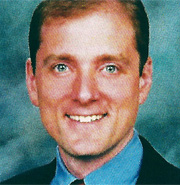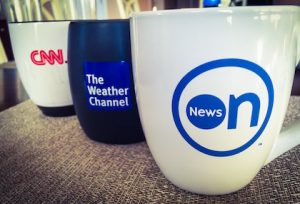 Louis Gump
Louis Gump
By Louis Gump In today’s world, “large company” often implies broad resistance to change. In addition to bureaucracy, too many cooks in the kitchen and a host of other cultural roadblocks to innovation, large media companies have to consider that new products are often presented to a mass audience. It takes guts to take risks in front of that many eyeballs, so many play it safe. Sure, there are plenty of other obstacles that limit our industry’s potential to drive true innovation, from technology limitations to contract provisions. However, individual and collective mindsets – including the idea of “Well, it’s just the way we do things” – are among the biggest. Even so, exceptions abound both in and out of the media industry. For example, although Disney was initially successful with animated short films, the company was not content to rest on its laurels. So it looked for, and found, opportunities in television, radio, theme parks, pro sports and toys, to name just a few. Another example is The Weather Channel, and specifically its growth on mobile platforms. In fact, this experience is a case study that illustrates four stages that most companies go through as they approach new opportunities: ignorance, apathy, fear and action. The four stages can be gradual and sometimes happen to different people and groups at different times, but there are commonalities and takeaways from which everyone can learn. This observation is based on my 15 years of active involvement with teams that have brought about dramatic change within large media organizations – including The Weather Channel and CNN – both as formal initiatives and informal, grass-roots efforts. Ignorance First, ignorance occurs because people are so busy that they completely miss the change happening all around them. Imagine being at The Weather Channel in 2001. While the value of weather data and maps on mobile phones is self-evident today, few envisioned that back when TV was still the primary source, the PC-based Web was still the Big New Thing, and mobile devices were advanced if they included current conditions and a three-day forecast. Even fewer people understood the capabilities and possibilities just around the corner, such as 3G networks, smartphones and applications, all of which fundamentally changed how and where people got weather information. At the time, and even with the commitment to innovation that the company already had, it was a challenge to fund just about any mobile venture. A team of people including Jody Stewart Fennell and Tom Flournoy had been lifting the business off the ground for several years already. We had a re-org, and a couple of us pitched in to chart the next chapter in the future of The Weather Channel’s mobile offerings. The real hero was Irene Sasamoto Witt, our product manager. Together, we repositioned the business from a fledgling mobile Web and PDA – personal digital assistant, such as Palm – remember those? – offering to a new app offering using Java and BREW app technologies, working through the wireless carriers. We launched new subscription apps in August 2002 on Sprint, in November on AT&T Wireless, and in May 2003 on Verizon Wireless. The offering was still emerging. Apathy And you know what? People started to know about it in more places. Many of them became big fans. When storms were coming, people who had the new apps would be the first to know even if on the go. We issued nice news releases and built a modest business at the time. Within the company, few missed the fact that we were active in the market, but on the other hand, we seemed somewhat peripheral to all but a few. While people still did not care that much on a large scale, a growing nucleus of forward-looking executives supported us within the broader company, including Debora Wilson, Joe Fiveash, Decker Anstrom, Paul Iaffaldano, Dan Agronow, Bill Burke, Becky Powhatan Kelley, Lisa Chang, Rusty Friddell, Mark Gildersleeve and many others. We formed a coalition of the willing, the kind of backing that is key for pulling off innovation. Fast forward to March 2005. Building on the success of apps, we launched made-for-mobile video services, and made them available over time on the same wireless carriers, as well as Cingular, which had bought AT&T Wireless. And then the video services grew. We made more made-for-mobile video every day than anyone else in the world that we knew how to find at the time, in any content category. Fear People were less apathetic then, and started to express some enthusiasm, but there was also fear, particularly when it came to business models and infrastructure. One question was, how would we absorb the workload? How would we deliver high-quality video, living up to our brand standards? Also, if people watched video on phones, what would happen to the TV and the Web-based businesses? There are good questions, not baseless ones. There are real consequences. People were afraid that we would stretch our resources too much, that we were staffed wrong, that we would have an inferior product, that mobile would threaten established business models, that digital ascendancy would threaten the rule of TV. On the other hand, the fundamental point is that either you disrupt and adapt yourself or someone else will. Further, our mobile offerings actually strengthened the brand and made it relevant to a new generation of users. If well managed, the fear stage can contribute to healthier growth. It typically intermingles with both apathy and action, while ignorance is rare at this stage. In some more successful organizations, it serves to advance the best ideas while allowing important refinements. Different people will move at different speeds, so it is important to meet them where they are along the continuum. A core group of us – including Pascal Racheneur, Traci Schoenberg, Monica Schnurr, Cathy Farr, Heather Wright, Cameron Clayton, Mike Zarrilli, Tony Grohovsky, Wendy Frazier, Tim Bolser, Derek Van Nostran, Betsy Riehman and Dave Blumenthal – worked hard to get it right. This is just a partial list of the contributors to give a sense of scale. We appreciated the contributions of so many more who participated in essential ways. The change was real, and we wanted to work with the other teams and strengthen The Weather Channel’s market position while building a track record of mobile excellence. We were convinced that a strong mobile business was essential to The Weather Channel’s business and brand strength in the future. Action Finally comes acceptance and action. In early 2008, the Batten family, which had owned The Weather Channel since its launch in 1982, announced their intention to sell the company. Then a notable thing happened. While the standing value of the company was largely based on the TV network and the weather.com PC Web site, mobile became an increasingly important part of the story, even as we worked through the process. In fact, the sale process forced us to think even more about the true value of the company, not just the results in that month or year – which, by the way, The Weather Channel team always tried to do anyway. If no one at The Weather Channel in the mid-1990s had had the vision and guts to develop a Web strategy, and in the late ‘90s to start on the mobile path, then in 2008, the company would not have had that asset to leverage at sale time. This is yet another example of why taking risks often pays off in major ways, and how that payoff sometimes takes a long time to materialize. Through this process came a new round of real enthusiasm. We had the earlier apps and would soon launch on iPhone and Android later in 2008. We had the video and were growing it, although our own internal mobile team had to adapt again when one generation of video plans gave way to another one. And we had a rapidly growing mobile Web offering, as well as the clearly relevant app alerts and severe weather text messages. We were on a roll. We were getting things done. We were excited. So were most of the rest of the people in the company and the prospective buyers. The environment had changed. Over the course of seven years, we had gone from phases characterized by ignorance and apathy to stages characterized by enthusiasm and awareness of the opportunity, with still plenty of questions around some of the unknowns.
 Mugs shot
Mugs shot
